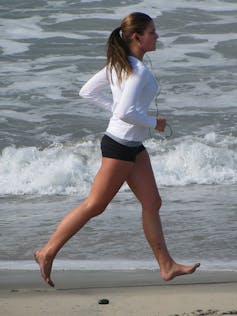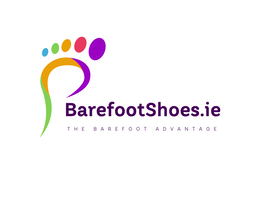
The human species is one of the most efficient terrestrial animals. We adapted to run on dry riverbeds and grasslands, but development of modern society has strained the evolutionary process. Footwear was initially introduced to protect the soles of the feet or provide traction or warmth. But as society has changed, footwear’s role has adapted to provide cushioning for the hard cobblestones or pavement, broad protection for industrial tasks, and more recently, as a fashion accessory and performance optimiser. A return to barefoot running has emerged as a subculture in recreational running, its devotees pointing to reduced injury rates and a more “natural” running experience. Perhaps the biggest impetus for the trend was Christopher McDougall’s 2010 best-selling book, Born to Run. While based on the story of Mexico’s Tarahumara Indians who run ultra-endurance distances barefoot or in tyre-tread sandals, McDougall also concludes that running shoes have done little to prevent injuries over the past 40 years. Apart from the aficionados writing in the popular literature, a key proponent of barefoot running is Harvard University evolutionary biologist Dr Daniel Leiberman. He argues that habitually barefoot runners land more on the mid-foot or forefoot, which reduces the transient shock on contact. 
Runners who wear shoes, on the other hand, land more on the heel and rely on the design of the shoe to absorb shock and control the foot during running. But Leiberman suggests the issue is less about barefoot running being better than shod running and more about how we run. Running barefoot encourages the runner to cushion the impact of landing by adjusting their running style to land with their toes down. The shock of landing is transmitted largely to the muscles at the back of the leg. As a result, barefoot and minimally shod running appears to reduce the risk of injury because they generate much lower collision forces. But don’t throw your running shoes away just yet. Barefoot runners must learn to change the way they run: landing more on the mid-foot or forefoot, rather than on the heel. Then the elastic structures within the foot will do the job they were designed to do. And the Achilles tendon and calf muscles will contract eccentrically to cushion this extra load. For those new to barefoot running, the unaccustomed strain on muscles and tendons can actually lead to injury – exactly what the change to barefoot running was supposed to prevent. The solution? Start out slowly on a safe surface (grass or sand) to toughen the sole of the foot and allow the soft tissue of the foot and ankle to adapt to the new loading strategy. Alternating running barefoot one day and shod the next will also decrease the risk of injury. We all have different abilities to learn and to adapt to new skills: some will make the adjustment and thrive as barefoot runners; others will struggle to make the change, particularly if they have irreversible structural problems with their tendons and muscles, caused by decades of wearing sneakers. Unfortunately, ditching your sneakers isn’t the silver bullet to preventing running injuries. Peter Milburn, Professor, School of Rehabilitation Sciences, Griffith University This article is republished from The Conversation under a Creative Commons license. Read the original article.
0 Comments
Your comment will be posted after it is approved.
Leave a Reply. |
|
We support Protect the Children of Kenya. A registered charity that helps assist children who have been withdrawn from forced labour. STOP CHILD LABOUR NOW - Learn more
Store Owner Kevin Griffiths , 8, Bothar an Chnoic, Knock Road, Claremorris, Mayo F12 E7D0
Ireland Reg No 642942 VAT No: IE 3232046U Dun & Bradstreet reg no 986063333
[email protected]
Ireland Reg No 642942 VAT No: IE 3232046U Dun & Bradstreet reg no 986063333
[email protected]

 RSS Feed
RSS Feed

